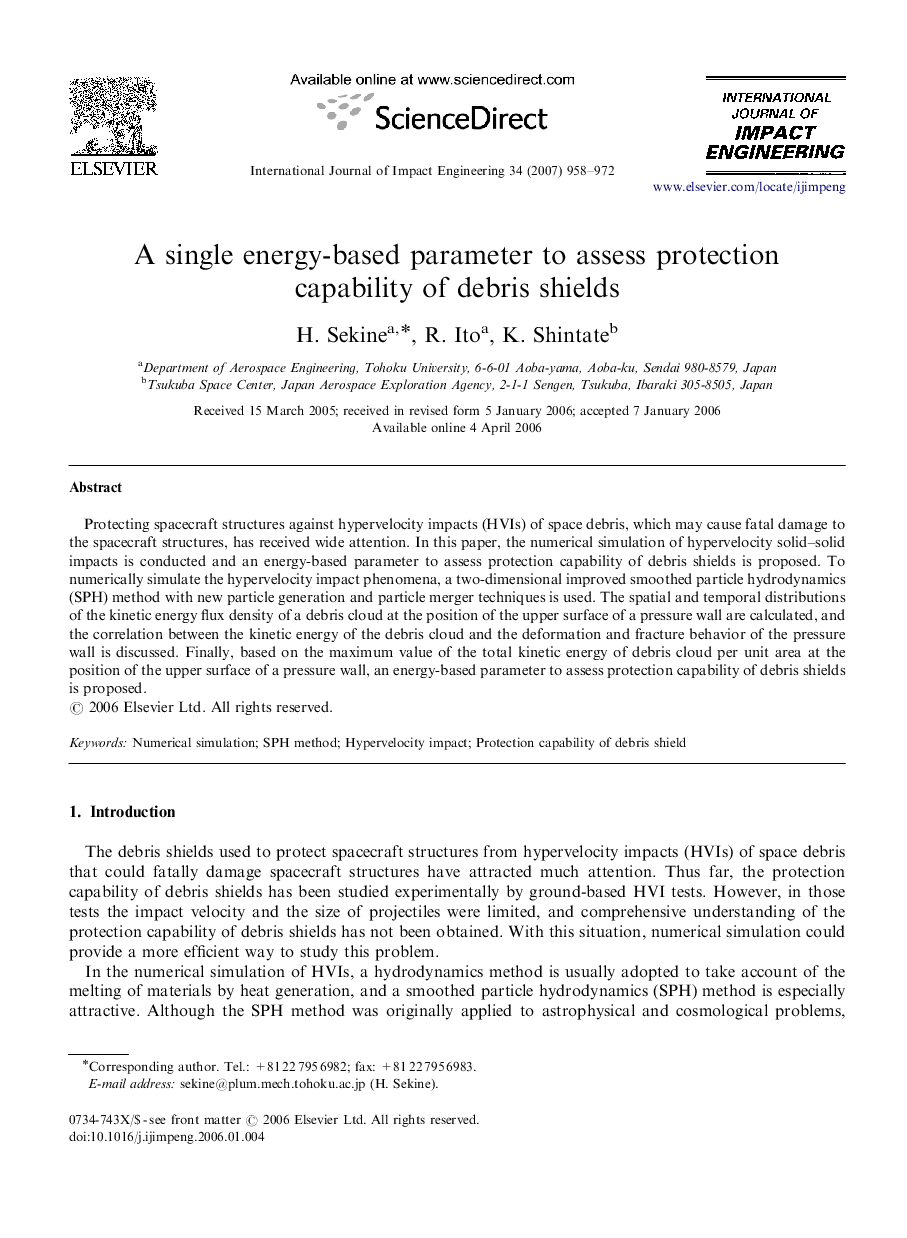| Article ID | Journal | Published Year | Pages | File Type |
|---|---|---|---|---|
| 777295 | International Journal of Impact Engineering | 2007 | 15 Pages |
Protecting spacecraft structures against hypervelocity impacts (HVIs) of space debris, which may cause fatal damage to the spacecraft structures, has received wide attention. In this paper, the numerical simulation of hypervelocity solid–solid impacts is conducted and an energy-based parameter to assess protection capability of debris shields is proposed. To numerically simulate the hypervelocity impact phenomena, a two-dimensional improved smoothed particle hydrodynamics (SPH) method with new particle generation and particle merger techniques is used. The spatial and temporal distributions of the kinetic energy flux density of a debris cloud at the position of the upper surface of a pressure wall are calculated, and the correlation between the kinetic energy of the debris cloud and the deformation and fracture behavior of the pressure wall is discussed. Finally, based on the maximum value of the total kinetic energy of debris cloud per unit area at the position of the upper surface of a pressure wall, an energy-based parameter to assess protection capability of debris shields is proposed.
